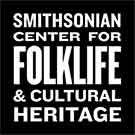From the Smithsonian Museums
Elisa Hough is the editor and social media manager at the Smithsonian Center for Folklife and Cultural Heritage.
This year, Folklife Magazine published a sprawling diversity of stories—from Armenian protest movements to young Asian American farmers.
Emily Buhrow Rogers and Carolyn Smith
Malgorzata Mical
Grace Dahye Kwon
Kate Harrington
Monique-Marie Cummings
Theodore S. Gonzalves
